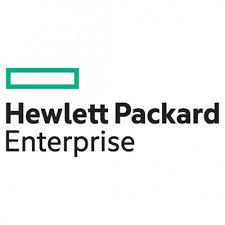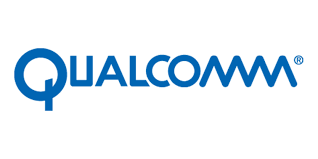View
Sorting
From A to Z
Products found: 7
CA Network Flow Analysis
With enhanced visibility into your network’s applications, hosts, conversations and QoS information, you can proactively manage your network to reduce outages, solve problems faster and ensure efficient and cost-effective operations. CA Network Flow Analysis can help you align resources to support business results, gain credibility and support with data-driven decisions and stop being the default target for blame.
CA Network Flow Analysis is recognized as the industry standard for flow-based network traffic analysis in Global 4000 enterprises and large service providers. It integrates with CA Performance Center, CA Application Delivery Analysis, CA Unified Communications Monitor and many CA Technologies third-party or custom IT management tools. And it’s a key component within the CA Technologies Application-Driven Network Performance Management (ANPM) solution.
CA Network Flow Analysis. Real results, right now.
Better application performance through faster problem resolution
Recognizes potential security events and issues
Greater alignment of IT resources to business results
-
-
ROI-
-
4
10
CA Performance Management
It was built to meet the unique demands of big data and modern networks architectures, including highly dynamic and complex hybrid cloud and software-defined networks (SDN).
The platform is design to reduce complexity inherent in modern networks built across numerous technology stacks through advanced network performance monitoring and relationship mapping for improved operational assurance.
Combined with CA Virtual Network Assurance, the platform extends operator visibility through advanced discovery and network performance monitoring of highly sensitive cloud and multi-layered SDN networks and service chains.
Designed for high scalability at low cost with big data in mind, our network performance monitoring solution delivers agnostic multi-vendor data collection and adaptive visualizations to provide easy insights into availability and business service integrity across any size network environment.
The platform enables less clicks to problem resolution and faster triage through service–oriented prescriptive analytics along with guided workflows and capacity analysis for meaningful and actionable insights you should expect from a modern network performance monitoring solution.
Built on an open API architecture, our next-gen network performance monitoring platform delivers a truly innovative network operations experience. The platform provides advanced analysis and intelligent data presentation though aggregation, relationships and build-block views through customizable and intuitive dashboards that delivers the right data to the right people faster.
The platform offers:
- Unified Network Performance Monitoring that enables seamless management of traditional, cloud and SDN networks in a one-dashboard experience
- Big-data architecture supporting four million items at 500,000 metrics per second to reliably meet the expanding monitoring needs of modern network architectures.
- Prescriptive analytics that provides meaningful and actionable insights for faster triage.
-
-
ROI-
-
8
18
CA Spectrum
CA Spectrum can enable your organization to discover, optimize and improve its infrastructure and the business services running on top of it.
By delivering large-enterprise scalability, robust features and superior root cause analysis, this solution can help your organization effectively manage its dynamic, complex IT infrastructure—including physical, virtual and cloud environments as well as network virtualization. The improved architecture of CA Spectrum reduces time and cost associated with the administration of multiple management consoles by supporting tens of thousands of devices and millions of models—increasing scalability while simplifying staff management.
CA Spectrum can help your organization improve network service levels. And by integrating automated fault management, fault isolation, proactive change management and root cause analysis into a single platform, this solution can help reduce fault monitoring costs as well. This solution automates fault management across multi-vendor and multi-technology infrastructures, tailoring information views and management capabilities to meet the needs of a broad range of technical and non-technical users.
CA Spectrum. Real results, right now.
Accelerate issue resolution.
Leverage automated discovery, event correlation and root cause analysis capabilities that improve MTTR.
Boost service levels.
Improve system availability and performance by minimizing erroneous changes.
Speed innovation.
Capitalize on innovative technologies and approaches, such as cloud and virtualization, while using a single management platform.
-
-
ROI-
-
18
18
CellMining CX-DRIVEN SON
It combines Behavior-Based SON™—including Centralized SON (C-SON) features—with the advanced analytics of Subscriber Experience Hub.
The solution is compliant with 3GPP specifications, and supports NFV/SDN technology paradigms. It delivers the most accurate, comprehensive, real-time/offline network optimization, driven by customer experience. With its open architecture, Behavior-Based SON™ can co-exist with conventional SON products. CEM teams use the unique, comprehensive dashboards to gain insight into their network subscriber experience.
Mobile network operators can now realize their vision of delivering dynamic, CX-driven network optimization.
Advantages
- Revolutionary technology based on innovative subscriber experience analytics
- Probe-free
- Detection of network faults and misconfigurations (e.g crossed cables, PIM and interference, more)
- Detection of poor quality in call and data sessions
- In-depth insight into communications quality of experience (QoE)
- Robust SON features for GSM networks, as well as 3G and 4G
- Optimal GSM – UMTS – LTE traffic management
- Big data analytics supports hundreds of millions of experience events
- Optimizes to meet comprehensive subscriber experience KPIs
- Network-agnostic – simplifies integration efforts and abstracts complexity to support future technologies
- Single underlying technology serves as basis for both SON and subscriber experience insights
- Hassle-free integration via a CDR abstraction layer
- Field-Proven in a live HetNet environment, including multi-vendor GSM, UMTS, LTE and small cells
- Subscriber-aware – analyzes and makes network decisions based on subscriber usage patterns
- Cost-saving – performs automatic engineering tasks, saves energy and defers capital investment
- Reduced need for physical drive tests (DT) due to Virtual DT features
- Open architecture – supporting deployment alongside conventional SON products
- Supplements existing customer profile data with network experience insight
- Integrates with CEM systems and applications
- Enables drilling down to subscriber dimensions (VIP, business, inbound roamers) and network dimensions (cells, roads, geographical coverage)
- Handset model compatibility reports
HPE Intelligent Management Center (IMC)
Network managers, engineers, and operators face complex challenges in their mission to deliver a reliable
and available network infrastructure. IMC is a comprehensive management platform that simplifies how IT
staff can successfully meet these challenges.
IMC was built from the ground up to support the FCAPS model for comprehensive management of the
network infrastructure. In addition, IMC was designed to support the ITIL operational center of excellence IT
practices model. IMC’s single–pane management paradigm enables end-to-end business management of IT
services to address the stringent demands of today’s mission-critical enterprise IT operations.
IMC provides scalability by supporting distributed and hierarchical system architectures, through additional
operating system and database support to meet the requirements of complex networks. IMC uses a SOA
model to provide full resource, service, and user management. Its modular design enables the integration of
traditionally separate management tools. IMC enables enterprises to expand their infrastructure
management in scale and to seamlessly accommodate new technologies at the same time.
IMC base platform features
IMC consists of a base platform and service components that offer additional functionalities. The base
platform provides administrators and operators with the basic and advanced functionality needed to
manage IMC and the devices managed by IMC.
The IMC base platform provides the following functions:
• Administrative controls for managing IMC and access to it. This includes granting or restricting
operator access to IMC features through operator and operator group management.
The base platform also includes features for the system-wide management of device data collection
and information shared by all IMC modules. Features include:
The creation and maintenance of device, user, and service groups
Device vendor, series, and device model information.
SNMP MIB management and other system-wide settings and functions. See "Role based
administrative controls."
• A broad feature set for network device management, from the ability to manage SNMP, Telnet, and
SSH configurations on a device to configuring Spanning Tree and PoE energy management for
managed switches and much more. See "Resource management."
• Management of the configuration and system software files on devices managed by IMC. This includes
storing, backing up, base-lining, comparing, and deploying configuration and software files. See
"Configuration and change management."
• Real time management of events and the translation of events into faults and alarms in IMC. This
includes creating, managing, and maintaining alarm lists, trap and Syslog filters and definitions, and
configurations for notifications of alarms. See "Real time fault management."
• Monitoring, reporting, and alarming on the performance of the network and the devices that comprise
it. This includes managing global and device specific monitors and thresholds as well as creating views
and reports for displaying performance information. See "Performance monitoring and management."
• Access control list (ACL) management. This includes creating and maintaining ACL templates,
resources, and rule sets and deploying ACL rule sets to devices managed by IMC. It also includes
monitoring and leveraging ACLs that exist on devices for deployment to other network devices. See
"Global ACL management."
• Monitoring and managing security attacks and the alarms they generate. See "Security monitoring."
• Global management of VLANs on all devices that support VLANs, managed by IMC. See "Global
VLAN management."
These are the functional areas of IMC’s base platform. In addition, the IMC framework and suite of services
also includes service components for extending the scope and reach of IMC’s ability to manage the network
infrastructure.
Qualcomm Unveils Mesh Networking Platform
“Qualcomm Technologies helped create a new category of mesh networks that are transforming in-home connectivity. With our new Qualcomm Mesh Networking Platform, we are building upon that foundation to accelerate the next generation of mesh systems to further enhance connected services in the home,” said Gopi Sirineni, vice president, product management, Qualcomm Technologies, Inc. “New capabilities like voice assistance and IoT radio integration will not only transform consumer experiences at home, but along with carrier-grade feature enhancements, make it easier for our customers to adopt and deploy mesh systems aligned to how people want their networks to perform.”
Driving the Mesh Networking Transition
The Qualcomm Mesh Networking Platform is based upon the Qualcomm® IPQ40x8/9 network system-on-chip, which is used in nearly every mesh networking product available today. The Qualcomm Mesh Networking Platform includes:
• Qualcomm® Wi-Fi Self-Organizing (SON) feature suite serves as one of the first collection of SON features designed to ensure corner-to-corner Wi-Fi coverage, easy set-up, automatic management and traffic optimization with near-zero user intervention, as well as additional security safeguards.
• Carrier-Grade features are designed to make it easier for carriers to enhance their broadband services with Wi-Fi SON, making application programming interfaces (APIs) available for easier porting of SON on to other silicon platforms. Qualcomm Technologies is also enabling software features, such as cloud-based diagnostics to enable remote monitoring, diagnostics and analytics for troubleshooting.
• Integrated voice capabilities allow consumers to control and interact with devices on their network using their voice. The Qualcomm Mesh Networking Platform can support a built-in microphone array and speaker, voice recognition software, and supports APIs to the most popular cloud-based assistant applications.
• Backhaul flexibility offers a variety of backhaul options that can be used to maximize the performance of mesh networks, including 802.11ac, 802.11ad, 802.11ax, or Powerline technologies.
• Qualcomm® IoT Connectivity Feature Suite is designed to help ensure compatible and simultaneous use of Wi-Fi, Bluetooth, CSRmesh™ connectivity, and 802.15.4-based technologies across a network, while also supporting previously announced communication protocols, cloud services and software frameworks. This allows it to act as a universal translator of diverse connectivity technologies and ecosystems, to minimize complexity and ease fragmentation challenges for manufacturers, developers and consumers.
• Qualcomm Mesh Networking Reference Design offers manufacturers an expedient path for the commercialization of next-generation networking products with cutting-edge features. This allows for completely new avenues of differentiation and business partnerships for OEMs, cloud providers and the IoT client/device ecosystem by centralizing the connectivity and control mechanics into the network.
-
-
ROI-
-
4
14
Subscriber Network Analytics Technology
Analysis of CDR data that determines the nature of use and reconstructs calls and data flows
Patented methods for analyzing call reconstruction and data flow sessions for the entire subscriber base.
When networked data is used using certain templates, two types of profiles are created:
- network profiles to accurately identify performance issues and opportunities to improve labeling
- subscriber profiles that enrich the CEM and application systems
Profile data has feedback from the network through OSS interfaces, providing recommendations for a closed and open loop. This ensures that the network is continuously optimized based on the dynamic needs and experience of the subscribers.
User profiles contain a huge amount of information of individual and group level - phones, routes, places, information about roaming, and much more. All this is available in powerful dashboard formats, and can also be used to inform external applications.
-
-
ROI-
-
14
9
The ROI4CIO Product Catalog is a database of business software, hardware, and IT services. Using filters, select IT products by category, supplier or vendor, business tasks, problems, availability of ROI calculator or price calculator. Find the right business solutions by using a neural network search based on the results of deployment products in other companies.






